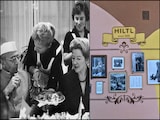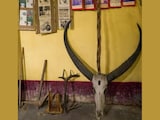Nepal's skyline was engulfed in smoke this week after one of its tallest hotels, Hilton Kathmandu, was reduced to a charred shell during violent anti-government protests. Dramatic visuals captured the glass tower in flames and smoke as demonstrators, many from Nepal's restless Gen Z movement, targeted government institutions, parliament buildings, and even private residences of political leaders.
Amid curfews, clashes with security forces, and a mounting death toll of nearly 20, the burning of Hilton Kathmandu became a grim symbol of how far the unrest has spread across the region.
All About Hilton Kathmandu
The Hilton Hotel in Kathmandu was not an overnight creation. Developed by the Shanker Group, the project first broke ground in 2016, with an ambitious vision to bring Nepal's hospitality sector to international standards.
Construction faced multiple setbacks over the years, most significantly during the COVID-19 pandemic, which delayed work across the valley. Yet, after nearly seven years of effort and an investment of roughly Rs 8 billion, the towering hotel finally opened its doors in July 2024, reported New Business Age.
Located in the Naxal neighbourhood, the 64-metre-high property became the tallest hotel in Nepal, offering nearly 176 rooms and suites across different categories.
Vision Behind Hilton Kathmandu
More than a luxury hotel, Hilton was conceived as a cultural statement. Its shimmering facade reflected vertical glass fins designed as an interpretation of Buddhist prayer flags. These dichroic panels shifted hues with the daylight and came alive in elemental colours after sundown.
The building's architecture also responded to its surroundings. One side leaned into the intensity of Kathmandu's urban streets, while the other opened up toward the Langtang mountain range, ensuring that the natural beauty of Nepal remained integral to the guest experience. Alternating balconies and flowing facade lines animated the exterior, giving the tower a dynamic presence on the skyline.
Inside, the Hilton offered a world-class hospitality experience. The lobby, banquet halls, and meeting spaces were concentrated on the lower floors, while the rooms above enjoyed unbroken views of the valley and mountains. Dining and leisure options were diverse, including five restaurants, a spa, a gym, and extensive event facilities.
The rooftop bar, Orion, celebrated Nepal's heritage with wooden carvings and mandala-inspired art, while its skylight framed the Himalayan night sky. Guests could also enjoy an infinity pool and all-day dining on the upper levels, with sweeping 180-degree views stretching across Kathmandu's urban fabric and the snow peaks beyond.
Given Nepal's seismic history, the Hilton was designed with resilience at its core. The tower included shear walls and dampening systems to withstand earthquakes, qualifying it as an "immediate occupancy" building. Safety was as central to its identity as luxury.
Current Situation Of The Hilton
Today, that vision of Hilton lies in ruins. Once a prism of glass and colour, the hotel now stands scarred by fire, its windows blown out, its facade stained with ashes, and its interiors gutted. The destruction of the tallest hotel in Nepal is more than just a physical loss. It marks the fragility of progress in a nation torn between hope and disillusionment.
What was built through years of investment, design, and cultural intent was destroyed in hours of rage.
The protests, which began over restrictions on social media apps, quickly escalated into a broader uprising against corruption and political stagnation. Even Prime Minister KP Sharma Oli's resignation did little to quell public anger, with protesters determined to press for systemic reform. In the chaos, Kathmandu's international airport was forced to shut temporarily, dealing a heavy blow to Nepal's tourism-dependent economy.











